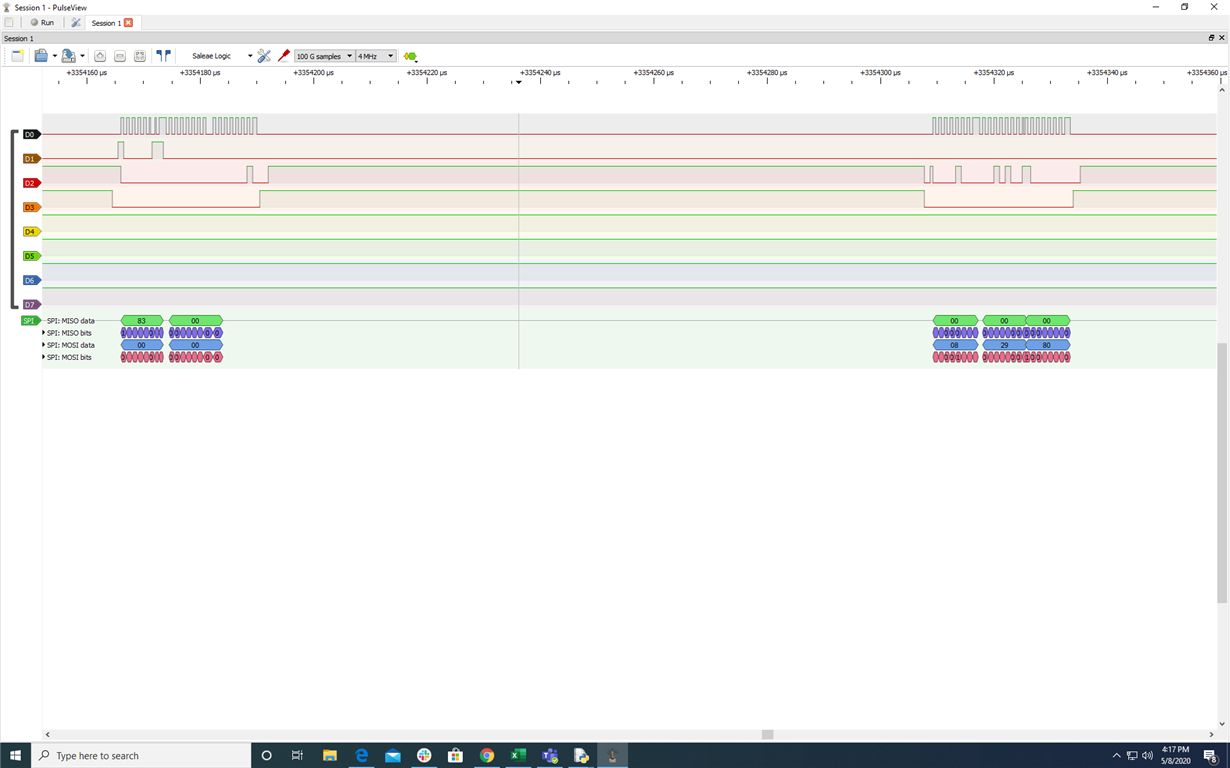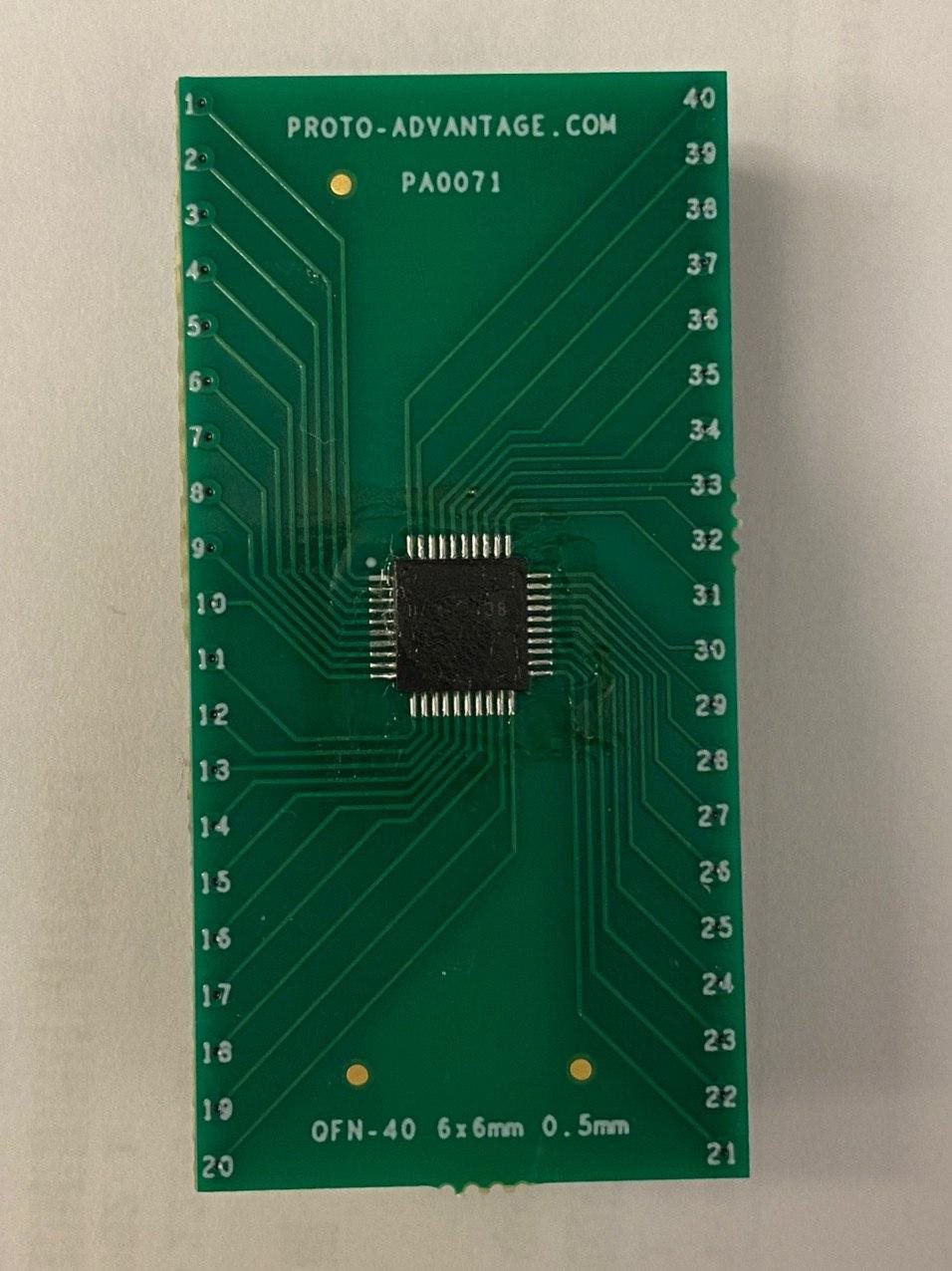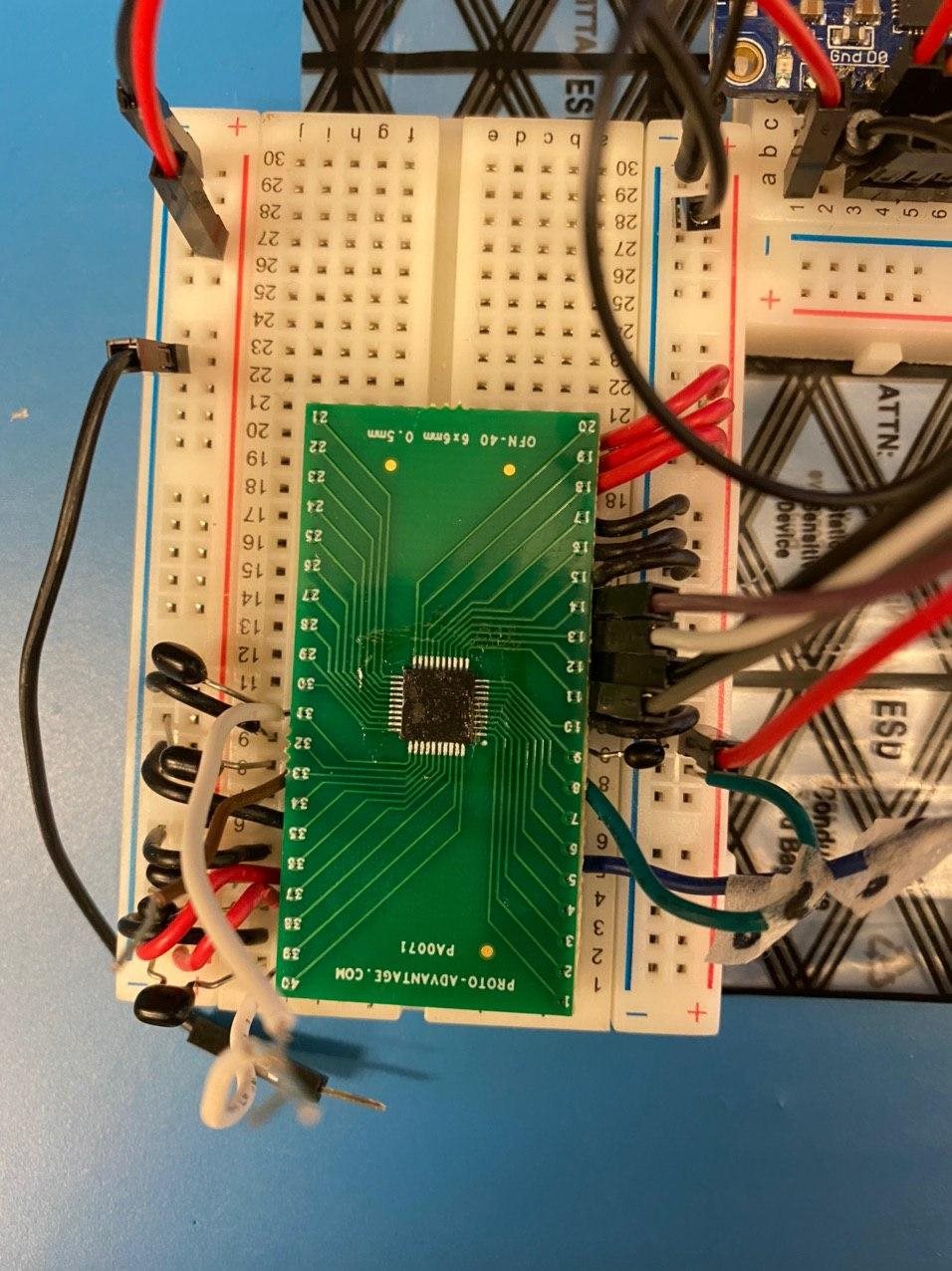Other Parts Discussed in Thread: USB2ANY, , DAC8718, DAC7734
Hi,
I have been trying to get this DAC work for a month. I even got the evaluation board twice, but not the USB2ANY interface cable. I tried interfacing to the DAC myself using python. I have used other DACs and they work fine.
So here's the issue with the DAC:
1. I see absolutely nothing in the outputs.
2. No SDO is issued.
So this is what I did for the DAC circuit (I'm not suing the evaluation board anymore):
Vcc = 10V
Vss = 0V
Vio = 5V (tried 3.3V and no response)
Vdd/Vaa = 5V
Vref = 5V
I Connect the CLR, RESET and LDAC pins to high (5V) so I don't have to worry about them until I can actually get a simple response from DAC.
When I try to communicate with the SPI, here's what I do with the registers (obviously CS should go low before writing, no CRC, no LDAC, no broadcast, no toggle, no differential and in asynchronous mode... as simple as possible):
*First byte is to write to a register, and two other bytes are the data (based on DAC datasheet)
Trigger register = 00001110 , 00000000, 00001010 (I want to do soft reboot of the device before changing the registers)
SPI Configuration Register = 00000011, 00000000, 00000100 (I want to enable SDO and also, take the device to active mode)
DAC Power-Down Register = 00001001, 11110000, 00001111 (I activated all the DAC outputs, so no power-down)
General Configuration Register = 00000100, 01111111, 00000000 (I power-down the internal reference and use a 5V external reference)
And then I try writing to OUT0 ... but nothing.
Can someone please help me? I tried everything with the evaluation board as well to no avail.
Thank you!














